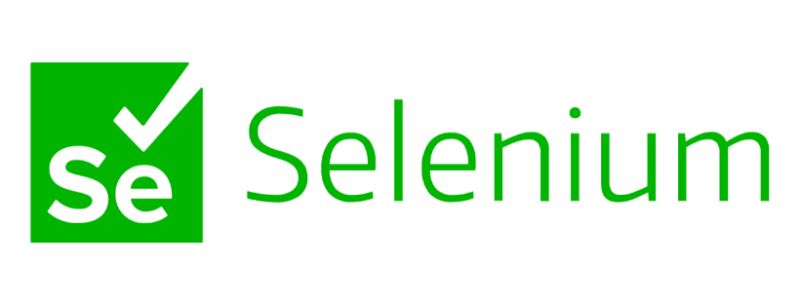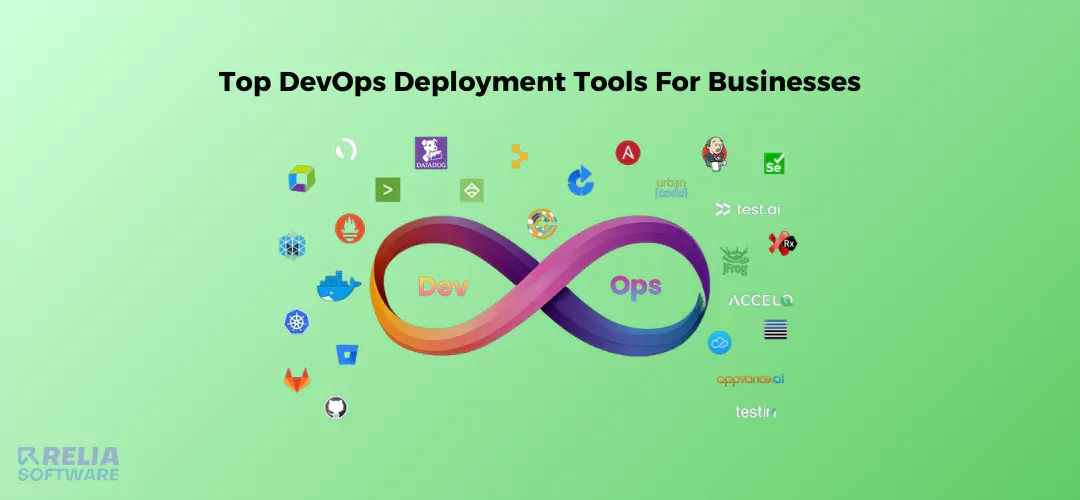Table of Contents
The world has changed thanks to DevOps. Automation, CI/CD, and deployment systems all help software developers and IT operations teams collaborate.
Successful product release is the biggest difficulty in product or application development. To address this, DevOps deployment tools are useful.
It can be hard to figure out which DevOps deployment tool is best for you because there are so many tools to choose from. Therefore, in this blog, we will give you great introductions to the finest DevOps deployment tools that we’ve figured out below. Let’s check it out!
What is Deployment in DevOps?
Before choosing which DevOps deployment tool is right for you. Let’s acknowledge the deployment in the DevOps model and what DevOps deployment tools are.
DevOps deployment retrieves critical codes from version control so the public can utilize the application in a ready-to-use and automated manner. It's a dependable, efficient way to test and implement organizational work.
Explaining DevOps continuous deployment technologies' functionality:
-
First, DevOps codes are merged for internal testing.
-
Next, staged testing follows the client's needs.
-
Last but not least, the production step ensures that altering these server codes does not affect other features.
DevOps deployment tools simplify server functioning for users. The enhancement over traditional application management has benefited all enterprises and users.

What are DevOps Deployment Tools?
DevOps deployment tools are tools that build, test, and deliver features automatically to eliminate errors and sustain continuous integration with DevOps.
Delivering code updates from development to production is automated and streamlined via DevOps deployment technologies. These steps are automated using DevOps deployment tools:
-
Building: They automate application code compilation and packaging into deployable artifacts.
-
Testing: These tools can run automated tests before deployment to check code quality and functioning.
-
Configuration Management: They can automatically arrange servers and infrastructure for application success.
-
Deployment: The tools transfer and activate application code in staging and production environments.
The following are common DevOps deployment types:
-
CI/CD tools automate the build, test, and deployment process for frequent, dependable software releases. Jenkins, GitLab CI/CD, and CircleCI are popular.
-
Containerization Tools: Docker and Kubernetes package apps into containers that may be deployed and scaled across environments.
-
Configuration Management Tools: Ansible, Puppet, and Chef automate server and infrastructure configuration, decreasing manual errors.
Organizations can optimize their software development lifecycle by using these DevOps deployment technologies.

>> Read more:
-
DataOps vs DevOps: Similarities, Differences & Use Cases
-
What is DevSecOps? 4 Steps To Integrate Security into DevOps
5 Significant Benefits of DevOps Deployment Tools
DevOps deployment tools offer a treasure trove of advantages that streamline the software development process and empower teams to deliver high-quality products faster. Let's explore some of the key benefits:
Increased Efficiency and Reduced Errors
Manual deployments are notorious for being time-consuming and prone to human error. DevOps deployment tools eliminate this by automating repetitive tasks such as building, testing, and configuration management. This frees up valuable developer time for innovation and reduces the risk of errors creeping into deployments.
Faster Time to Market
Traditional manual deployments can significantly slow down the release cycle. With DevOps deployment tools, automation streamlines the entire process, enabling frequent and faster deployments. This allows organizations to get new features and updates into the hands of users quickly, fostering a competitive edge.
Improved Collaboration
DevOps deployment tools bridge the gap between development and operations teams. These tools facilitate better communication and collaboration between both sides by automating tasks and providing a centralized platform for managing deployments. This fosters a culture of shared responsibility and streamlines the development lifecycle.
Increased Scalability
As applications evolve and user bases grow, the ability to scale deployments efficiently becomes crucial. DevOps deployment tools excel in this area. They allow for automated scaling of deployments across various environments (e.g., development, staging, production). This ensures applications can handle increased traffic without compromising performance.
Consistent Deployments
Manual deployments can introduce inconsistencies in server configurations and application setups. DevOps deployment tools address this by automating the configuration process. This ensures consistent and reliable deployments across all environments, minimizing the risk of unexpected issues after deployment.
9 Quality DevOps Deployment Tools for Business
AWS Cloud Computing and Storage in DevOps
AWS Cloud Computing and Storage are essential for DevOps because they provide scalable, adaptable, and cost-effective infrastructure. AWS provides computing resources, databases, container orchestration, and serverless computing, which meet modern software development and deployment needs.
Organizations use DevOps to provide software faster. AWS supports CI/CD pipelines, quick application deployment, and infrastructure provisioning with technologies like AWS CloudFormation.
AWS's storage solutions also streamline data management, backup, and recovery, assuring DevOps resilience and dependability. DevOps teams can focus on innovation and efficiency with AWS's leadership in cloud technologies.
Key Features:
-
On-demand resources for fast scaling
-
Pay-as-you-go model for cost optimization
-
Automation & Infrastructure as Code (IaC)
-
AWS CodePipeline for CI/CD workflows
-
AWS CodeDeploy for automated deployments
-
AWS CodeBuild for managed build services
-
Shared responsibility model for security
-
Compliance certifications for regulations
|
Advantages |
Disadvantages |
|
|
Case study:
The issue:
The unnamed fastest-growing financial services business was having a hard time with a software development and deployment process that was slow and had to be done by hand.
Because of this, it took longer to bring new features and functions to market.
Solution: Using AWS cloud technologies, the company set up a managed services platform built on DevOps.
How AWS Works?
-
Most likely, Amazon Web Services (AWS) like Amazon EC2, Amazon S3, and AWS CodePipeline are being used to set up an automated and scalable system for building, testing, and releasing apps.
-
The case study doesn't go into specifics, but these services would make it possible for things like:
-
Setting up and managing computing tools (EC2)
-
Keeping application code and other files (S3)
-
The build, test, and release pipeline is being automated (CodePipeline).

Chef
Chef, a sophisticated automation software, is essential for infrastructure as code. Chef helps companies scale, reliably, and quickly. Chef automates server provisioning, setup, and maintenance, improving infrastructure efficiency and consistency and decreasing manual errors.
Chef also works well with cloud providers, containerization technologies, and other DevOps tools, making it adaptive to changing tech. Chef continues to automate complicated infrastructure processes and free DevOps teams to innovate and deliver as organizations prioritize agility and scalability.
Key Features:
-
Code using a Ruby-based DSL. Version control, collaboration, and reproducibility across settings are possible.
-
Prioritises system state over steps. This streamlines configuration management and reduces errors.
-
Manages packages, users, services, files, etc. using "recipes" and "cookbooks." This increases modularity and simplifies configuration.
-
A huge and active community adds cookbooks, plugins, and extensions, enhancing its capability and meeting varied demands.
-
Provides role-based access control (RBAC) and encrypted cookbooks to secure sensitive data.
|
Advantages |
Disadvantages |
|
|
Ansible
Ansible is a strong and popular automation and configuration management technology crucial in 2024 for various reasons. This tool's simplicity and adaptability stand out. DevOps and IT teams benefit from its ability to automate repetitive activities, infrastructure provisioning, and configuration management across varied settings.
Ansible's declarative language, agentless design, and a large library of pre-built modules make it accessible to novices and experts. Ansible is an essential DevOps toolkit for streamlining operations, improving security, and scaling infrastructure while reducing manual errors and increasing agility in a fast-paced technological landscape.
Key Features:
-
Communicates and configures securely using SSH, removing the need to install software on target nodes.
-
Configures and deploys using human-readable YAML playbooks. Even novice scriptwriters can understand these playbooks.
-
Guarantees idempotence, thus running a playbook many times applies the desired state just once. It reduces unwanted configuration modifications.
-
Security: RBAC manages user rights and secures playbooks and inventories in Ansible.
|
Advantages |
Disadvantages |
|
|
Case study:
Microsoft had to address an increasingly complicated corporate network architecture with tens of thousands of endpoints that connect its global offices. With thousands of devices of various brands, models, and software versions, it can be challenging to keep up with all the suppliers and methods we use. Because the development and engineering teams' code wasn't version-controlled or peer-reviewed, duplication and quality issues increased.
Solution:
Microsoft standardizes and centralizes network automation to decrease repetitive activities and complexity. Ansible lets them develop blueprints to deploy the same thing several times instead of manually. They deploy the same way every time.
Result:
Microsoft moved from manual scripting to CI/CD methodology supported by a centralized architecture by focusing on people, processes, and technology. Now their DevOps teams can share knowledge, grow skills, and innovate technology.

Jenkins
Its power as an automation server for CI/CD pipelines makes it important. Jenkins automates creating, testing, and delivering code changes to produce high-quality software quickly. Modern apps are becoming increasingly sophisticated, making efficient CI/CD processes essential.
Jenkins is suitable for varied development contexts due to its flexibility, extensibility, and large plugin library for a variety of technologies and tools. As organizations prioritize speed, dependability, and cooperation in software development, Jenkins is a key tool for seamless automation and efficient software delivery.
Key Features:
-
Free and customizable thanks to a large plugin ecosystem. Jenkins plugins integrate with numerous technologies and platforms to add unique functionality.
-
Offers declarative or scripted CI/CD pipelines as code allowing version control, collaboration, and deployment procedure repeatability.
-
Plan and automate CI/CD pipeline processes like creating, testing, deploying, and monitoring applications.
|
Advantages |
Disadvantages |
|
|

Docker
Docker is required for modern software development and DevOps. It simplifies and streamlines application management across environments. Docker containers isolate an app and its dependencies, allowing consistent development-to-production deployments.
Portability, scalability, development speed, and "it works on my machine" are improved by this technique. Docker's containerization approach is critical to DevOps and continuous delivery pipelines for efficient, isolated, and flexible application deployment in a rapidly changing software landscape.
Key Features:
-
Docker stores and shares container images in a registry letting developers quickly use pre-built images or create and distribute their own, enabling collaboration and reuse.
-
Docker containers are lightweight and portable, making them perfect for microservices designs and rapid deployments.
-
Resource isolation. This optimizes resource use and prevents application conflicts.
-
Docker works nicely with orchestration technologies like Kubernetes to manage and scale containerized applications across a cluster of servers.
|
Advantages |
Disadvantages |
|
|

Kubernetes
Kubernetes (K8) are crucial to modern software development and operations. Its capacity to scale containerized application orchestration, management, and automation makes it important. As more companies adopt microservices designs and containerization, Kubernetes provides the infrastructure to deploy, scale, and maintain these containers.
Resilience, self-healing, and hybrid and multi-cloud compatibility make the tool essential for agile, reliable, and cost-effective application deployment. It powers cloud-native ecosystems, helping companies speed up software delivery, optimize resources, and adapt to digital changes.
Key Features:
-
Deploys, scales, and manages containerized applications across a cluster of servers. It reduces manual operations and assures deployment consistency.
-
Offers service discovery and load balancing.
-
Restarts and reschedules unsuccessful containers on healthy nodes.
-
Defines deployment state using declarative configuration files. This streamlines management and automatically converges the cluster.
-
Resource management. Kubernetes allocates CPU, memory, and other resources to containers throughout the cluster. This optimizes resource use and prevents disputes.
-
Supports horizontal scaling of containerized apps. Elastic scaling for dynamic workloads allows you to add or delete cluster nodes on demand.
-
Role-based access control (RBAC) and network policies control resource access and container communication in Kubernetes.
|
Advantages |
Disadvantages |
|
|
Azure Cloud DevOps
Azure Cloud Computing and Storage will drive DevOps in 2024 and beyond. Azure's broad cloud ecosystem lets companies grow infrastructure, create apps, and store data efficiently. Azure delivers crucial CI/CD, automation, monitoring, and security capabilities. Its cloud computing features enable on-demand resource allocation for development and testing environments.
Azure Blob Storage, Azure Files, and Azure SQL Database offer data-driven DevOps with safe data storage and retrieval. Azure's integration with DevOps technologies like Azure DevOps Services improves software development and enhances collaboration and automation.
Key Features:
-
Provides tools for planning, development, testing, deployment, and monitoring throughout the SDLC.
-
Streamlines Microsoft Azure workflow.
-
Construct and automate CI/CD pipelines for building, testing, and deploying apps. This pipeline can be activated by code commits, scheduled events, or human operations.
-
Team dashboards, work item tracking, and code reviews let development and operational teams collaborate with Azure DevOps.
-
Azure Repos lets developers monitor changes, collaborate, and revert to prior versions of code securely.
|
Advantages |
Disadvantages |
|
|
Case study:
Challenge:
The client's program was produced but not using best practices for software development, code management, etc.
Every little mistake has led the product to malfunction. Manual operations take a long time and cause software updates to be delayed. It also makes it difficult for clients to go beyond 5-6 clients.
Solution: Using Azure DevOps automated distribution, making the software's cloud architecture safer for information and setting up Azure automation for the client.
How does Azure work?
Several Azure DevOps tools are mentioned in the case study and are likely to have helped with the solution:
-
Continuous Integration/Continuous Delivery (CI/CD): Azure Pipelines are likely used to automate the process of building, testing, and deploying, which cuts down on the need for human help and downtime.
-
Repositories for Code: Azure Repos is probably where all of the application code is stored and managed.
-
Better Collaboration: Azure DevOps features like team screens and work item tracking may be making it easier for development and operations teams to talk to each other and work together.
-
Scalability and Performance: The case study shows that Azure DevOps helped make the software run faster overall, possibly by making better use of resources and making workflows more efficient.

Travis CI
Travis CI speeds up code development and ensures application deployment. It prioritizes integration over delaying it as the first CI service tool, helping teams avoid “integration hell”. Travis CI's pre-installed database services help them set up and test their code in minutes.
Teams can sync and check automated builds for issues. Travis CI changed cloud computing and code creation. PHP, Java, and Node.js development are supported languages, platforms, and configurations. User benefits include a sophisticated API and command line tool.
Travis CI automates code reviews and sanity checks. These ensure that builds pass all internal checks before integration to fulfill quality criteria.
Travis CI integrates with different DevOps ecosystems. Signing up with GitLab or Bitbucket lets you connect to these repositories.
Continuous integration platform Travis CI speeds up code writing and app deployment. As the first CI service tool, it helps teams avoid “integration hell” by prioritizing integration.
Key Features:
-
Easy to install and integrate. A YAML configuration file (.travis.yml) lets you integrate your code repository with GitHub, GitLab, and Bitbucket.
-
Automatically builds and runs your test suites when code is pushed to your repository.
-
Lets you define a build matrix for parallel testing in your configuration file. This lets you run tests in parallel across environments or configurations, saving time and speeding up feedback.
-
Integrates with several deployment tools, but focuses on CI. Travis CI offers free options for public repository-hosted open-source projects. This appeals to open-source developers.
-
Travis CI protects sensitive build configuration data with basic security features like environment variable encryption.
|
Advantages |
Disadvantages |
|
|

Selenium
Due to its importance in web application quality, it remains an important tool in software automation testing. Web applications get more complicated as technology advances, requiring cross-browser testing.
Selenium helps developers and QA teams automate repetitive testing processes, perform cross-browser testing, and guarantee online applications work properly in varied contexts.
The open-source nature, active community support, and integration with other DevOps tools make Selenium a popular choice for organizations seeking continuous delivery and rapid deployment of high-quality software, a cornerstone of modern software development.
Key Features:
-
Automates browser activities like clicking buttons, filling forms, submitting data, and navigating websites. Simulating user behaviors and evaluating web application functioning is possible.
-
Selenium interacts with browsers using the WebDriver API. This API lets you programmatically operate the browser, send commands, and obtain web page data.
-
Allow recording and replaying. This records web page user actions and generates basic test scripts for playback, which novices can utilize.
-
Works nicely with JUnit, TestNG, and pytest. This helps you organize and report automated tests within a framework.
-
Able to execute tests headless, without a browser window. This speeds up server-side automation and test execution.
|
Advantages |
Disadvantages |
|
|
>> Read more: Top 22 Best DevOps Automation Tools For Businesses 2024
Factors to Consider When Choosing DevOps Deployment Tools
With so many DevOps deployment technologies, choosing the right one might be difficult. When shortlisting, testing, and choosing DevOps deployment tools, consider:
-
Starting with the DevOps deployment tool feature gap you're aiming to address can help you define the tool's capabilities and functionality.
-
Who'll need it? Consider who will use the product and how many licenses you'll need to assess cost and requirements. You must decide if only QA software testers or the entire company needs access. After that, decide whether you're prioritizing simplicity of use for everyone or speed for DevOps deployment tool power users.
-
What other tools it needs Clarify which tools you're replacing, which are remaining, and which you'll need to incorporate, such as testing, automation, or bug tracking software. Decide if the tools need to be combined or if one DevOps deployment tool can replace them.
-
Consider what the software must achieve to succeed. Consider what skill you wish to enhance and how you will measure accomplishment. An outcome could be better performance visibility. If you don't consider your goals, you could waste a lot of time comparing DevOps deployment options.
How it would function in your organization—compare software selection with workflows and delivery methods. Assess what works and what needs fixing. Every company is different, so don't assume a popular tool will work for you.
Conclusion
Several DevOps deployment tools have been made to make the difficult process of deploying software and apps easier. From top to bottom, these tools look at everything. The DevOps deployment tools take care of everything, from making to testing to deploying.
Choosing the right DevOps deployment tools for your projects is hard, however, with the suggestions and consideration factors above, we hope you can find the best tool for your projects and business.
>>> Follow and Contact Relia Software for more information!
- development



